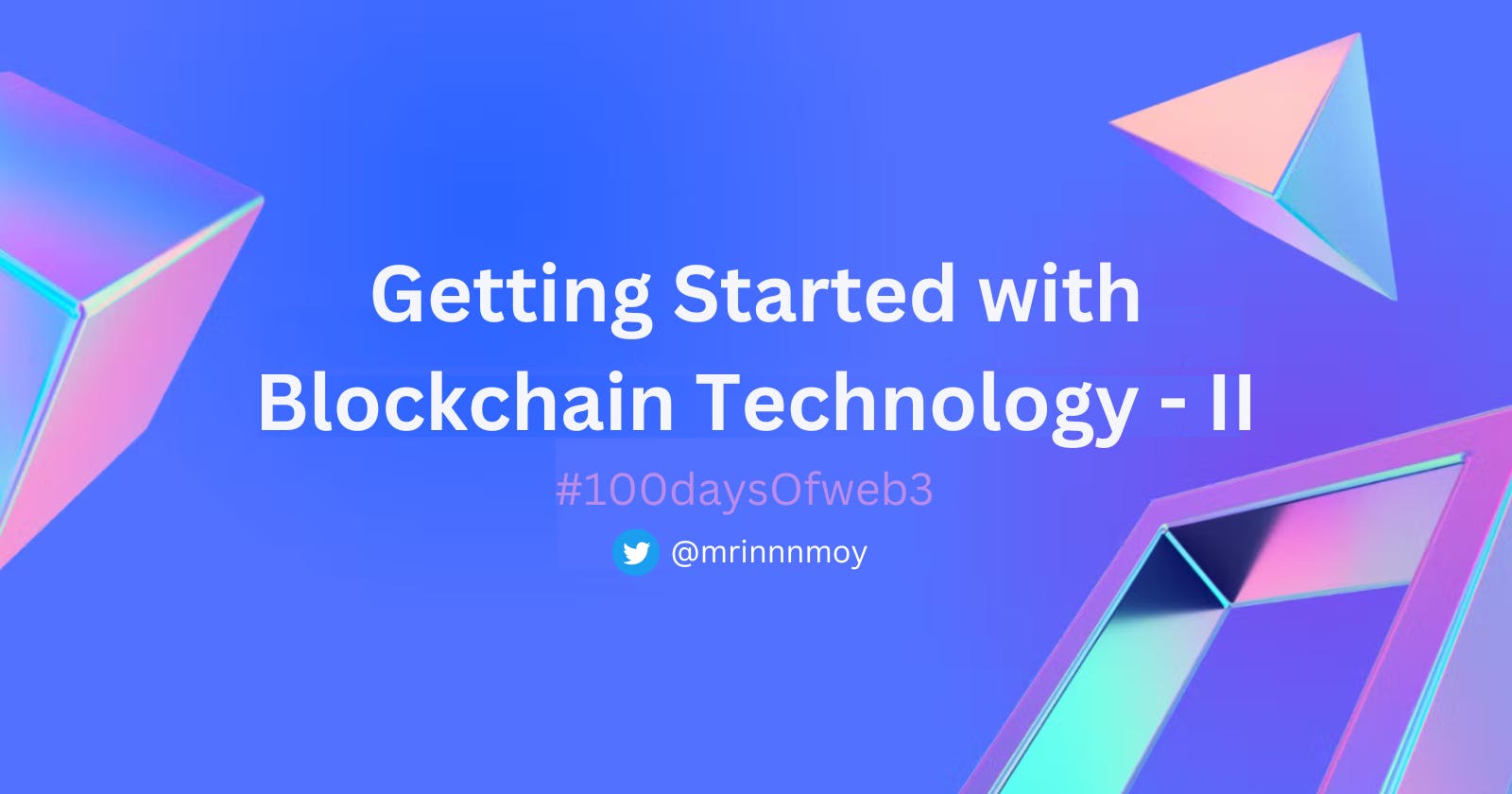It's been 7 days since I started learning Blockchain Development with the initiative of #100daysOfweb3 and this article depicts all the learnings that I have acquired about Blockchain in the following week.
So starting with, a few days back I published my first article on Blockchain development where I talked about blockchain and this article it's going to be about Cryptocurrency.
What is Bitcoin
Bitcoin is a digital currency in which a record of transactions is maintained and new units of currency are generated by the computational solution of mathematical problems, and which operates independently of a central bank. It uses blockchain technology to support peer-to-peer transactions between users on a decentralized network.
Bitcoin is powered by open-source code known as a blockchain, which creates a shared public history of transactions organized into "blocks" that are "chained" together to prevent tampering. This technology creates a permanent record of each transaction, and it provides a way for every Bitcoin user to operate with the same understanding of who owns what.
Bitcoin Ecosystem
In the Bitcoin ecosystem, miners who earn the coins are at top of the chain. Traders, the second link in the chain, strive to profit from the Bitcoin-to-fiat cycle by controlling it. The final link in the ecosystem is consumers who spend the coins to buy goods or services.
A typical Bitcoin transaction includes a list of senders and recipients represented by pseudonymous addresses, the total amount of coins given and received, and the transaction's timestamp.

Bitcoins's Monetary Policy
Every country has a Central Authority, and banks that control the amount of money that goes into the system. This money/currency is used to maintain the supply and demand, for which this monetary policy is made.
Since BTC deals with money and transactions, it also has its monetary policy, written by Satoshi Nakamoto.
It consists of two main parts:
The Halving
After every 210,000 blocks mined, or roughly every four years, the block reward given to Bitcoin miners for processing transactions is cut in half. This event is referred to as halving because it cuts in half the rate at which new bitcoins are released into circulation.
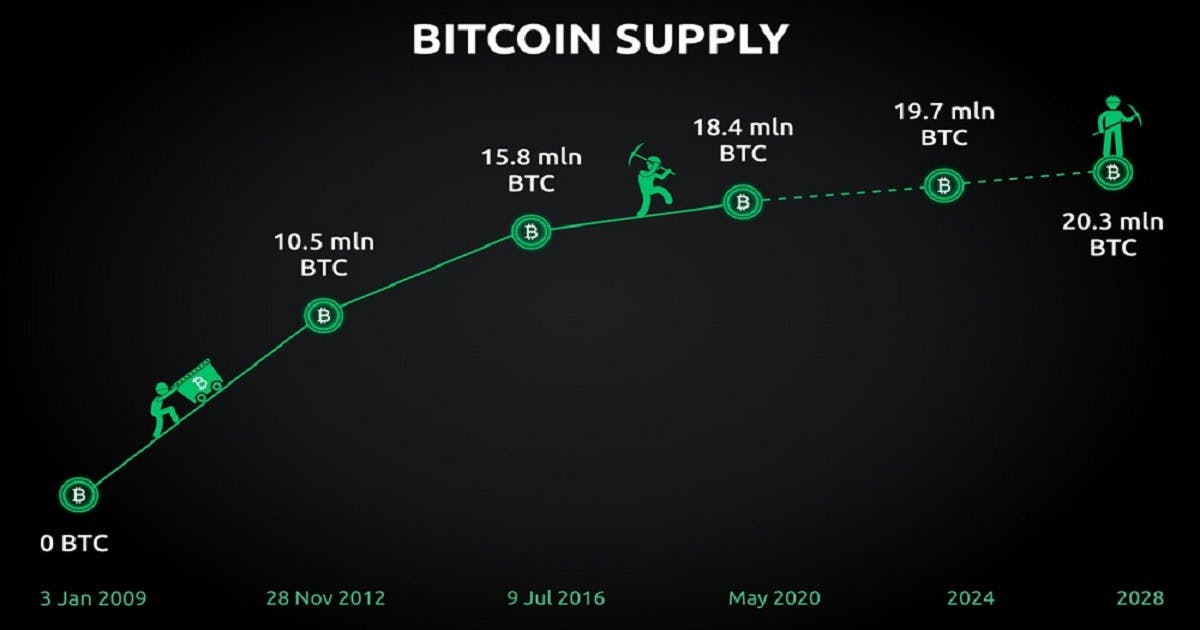
Block Frequency
Block frequency is a relative metric that represents the number of times a block executes. The ratio of a block frequency to the entry block frequency is the expected number of times the block will execute per entry to the function.
How does Mining work?
Bitcoin mining is a complex computational and technological process of validating bitcoin transactions over the Bitcoin network. It is like a process of validating a block on the chain network and getting paid in Bitcoin. People who are involved in this process of mining are known as miners.

The Nonce
A nonce is a value or a number that can only be used once. Cryptographic hash algorithms and authentication protocols frequently employ nonces. An artificially generated number used as a counter during the mining process is known as a nonce in the context of blockchain technology.

Target
Target is a number used in mining. It is a number that a block hash must be below for the block to be added to the blockchain. The target adjusts every 2016 block to try and ensure that blocks are mined once every 10 minutes on average.

CPUs v/s GPUs v/s ASICs
Before ASICs and GPUs, mining was initially performed with regular Central Processing Units (CPUs). Later, GPUs were used to solve the complex algorithm. The Graphic Processing Units, also known as GPUs, were primarily developed to enhance the productivity of the graphic cards of computers. The GPU is the chip on the graphics card that performs repetitive calculations. It is used in computers for processing graphics and developing high-resolution games. The GPUs are designed to quickly execute repetitive calculations when rendering video games, graphics, or 3D video.

When mining with CPU became unprofitable, dedicated mining individuals started using these cards to mine cryptocurrencies. In general, a GPU mining rig comprises several GPUs working in a computer setup. As the number of GPUs rises, the hash power also increases. GPU mining offers flexibility because it is possible to mine multiple cryptocurrencies with GPUs. The graphic processing units can efficiently mine altcoins, especially Ethereum.
ASIC means Application-Specific Integrated Circuit. It is a microchip specifically designed to execute a hashing algorithm. An ASIC is a computing device that can solve the most complex tasks quickly. The ASICs are the most powerful hardware available today as they can calculate hashes 100,000 times faster than even the best CPU. ASIC miners are of varying sizes and the latest devices have the complexity of over 100 million logic gates. In ASIC, Application-Specific implies that this particular microchip is intended to perform only one specific task. These miners typically consist of multiple chips on a circuit board, a fan, ROM, RAM, and other building blocks.
ASIC is considered more efficient and powerful than CPU and GPU miners because it is custom-built for a single hash algorithm. However, this means that you need to buy different ASICs for each coin you want to mine. As far as performance is concerned, ASIC-enabled mining equipment can outperform other equipment.
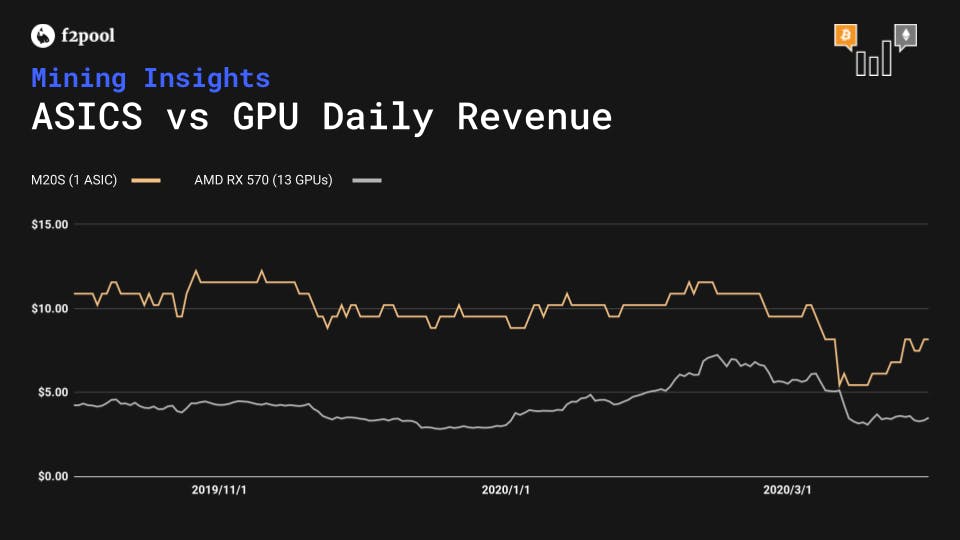
Mempool
A mempool is an organized queue where transactions are stored and sorted before being added to a newly created block. The memory pool holds “fresh” or unconfirmed transactions (stored as individual transactions). The blockchain holds “archived” or confirmed transactions (packaged in “blocks”).
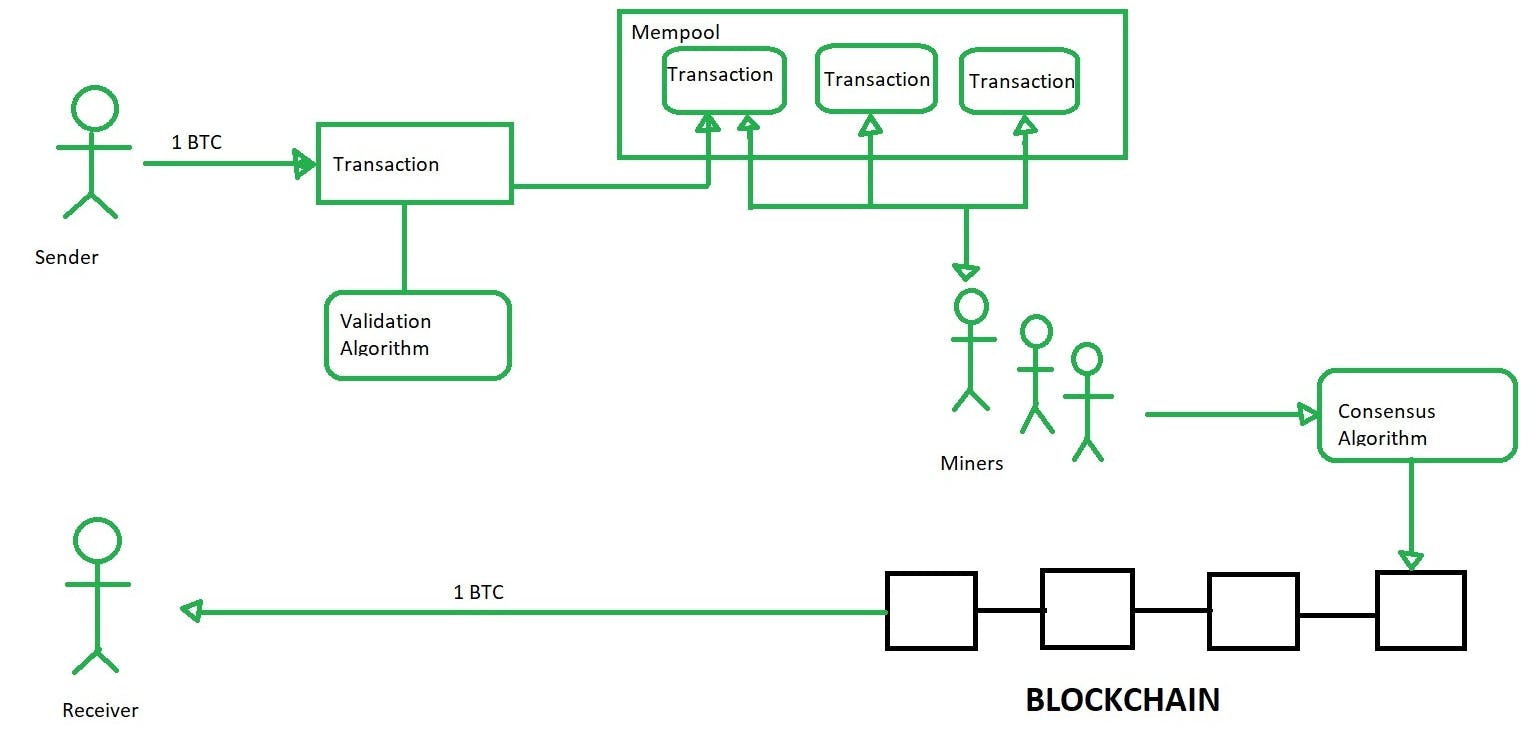
Transactions & UTXOs
A transaction is when participant A gives a designated amount of currency they own to participant B. Transactions are created through mobile, desktop or hardware wallets.
A UTXO is essentially the unused part of a transaction. It stands for Unspent Transaction Output. Every time a cryptocurrency transaction takes place, existing inputs are deleted and new outputs are created. Any outputs that aren't immediately spent become a UTXO that's tied to the sender in the transaction.
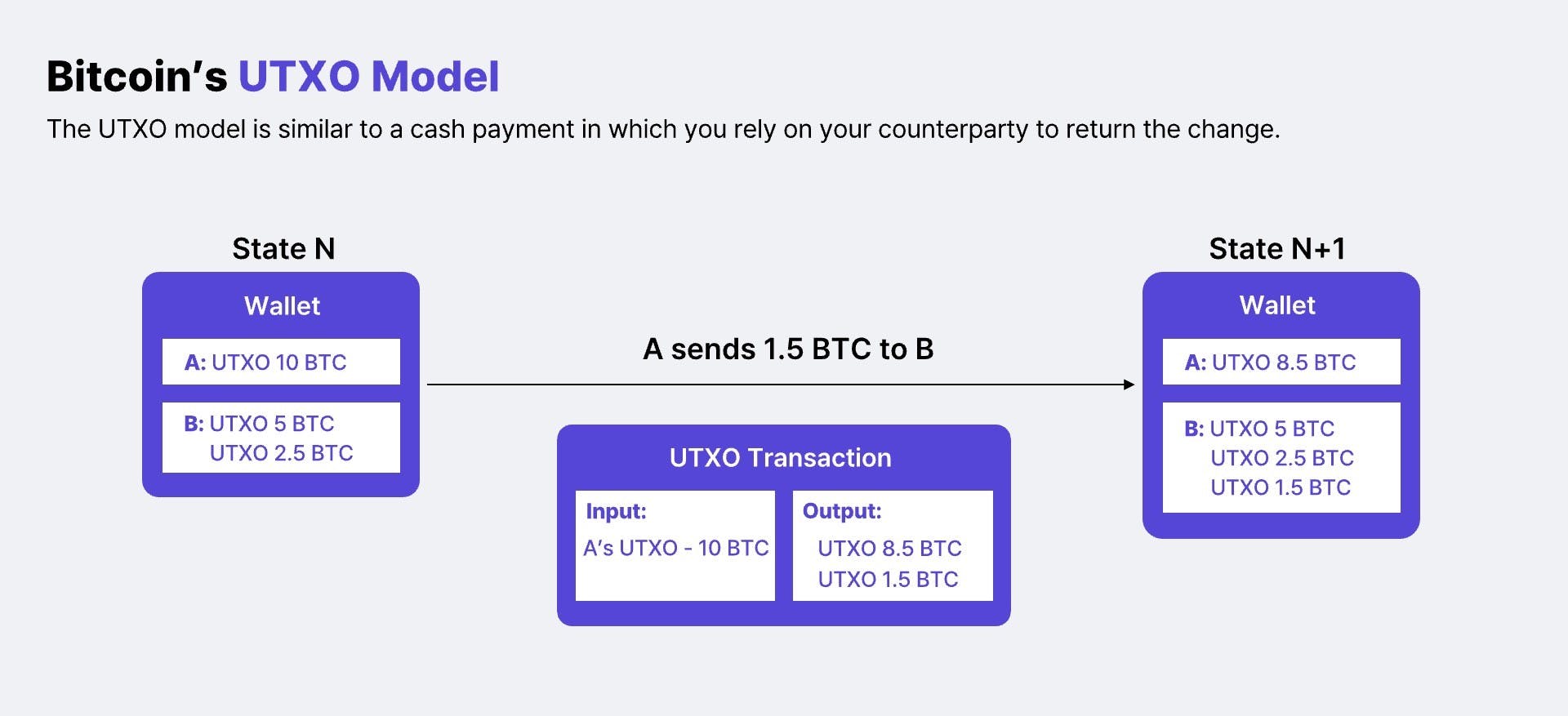
Cryptocurrency Wallets
Cryptocurrency wallets are blockchain wallets that allow users to manage different kinds of cryptocurrencies - for example, Bitcoin or Ethereum.
A blockchain wallet helps someone exchange funds easily. Transactions are secure, as they are cryptographically signed.
Private & Public Keys
The private key acts as your digital signature, which can be used to prove ownership of coins in the wallet.
While anyone can send transactions to the public key, you need the private key to "unlock" them and prove that you are the owner of the cryptocurrency received in the transaction.

Conclusion
That's all I managed to learn in just 7 days, but I'll attempt to write articles to record what I learn in the future.
Below are the links to resources that I am following for learning Blockchain Development.
If you liked this article do share it with your friends and follow me on my socials.
